
Hey guys, this is Nikki, Lead Veterinary technician with Posh Dog Knee Braces. So, today I would like to talk about Laser Therapy for Dog’s with knee injuries ACL/CCL, or arthritis, and how it can help! First off, what is Laser therapy? Laser therapy is taking a simple beam of light to penetrate deep into the tissues and produce positive tissue changes. First used on hair regrowth, Laser therapy has been a growing success.
There are 2 types of treatment you will hear. Cold laser, which focuses on the surface of the skin, and blood circulation, while hot laser are for deeper tissues. Hot laser should only be done by medical professionals, as it is used for cutting and burning, as well as healing.
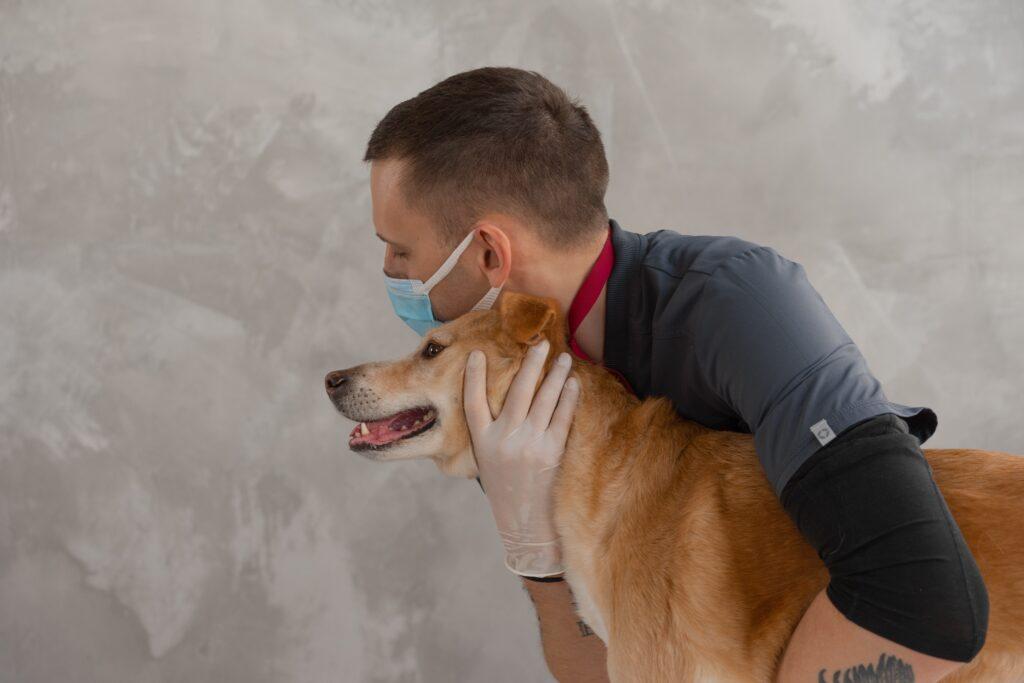
In most practices, we use low-level laser, or class IV laser therapy. Depending on the class of the laser, will tell you if it is something you can do from home or by a clinician. Quality laser equipment is very expensive, thus most will opt for therapy with their holistic vet, chiropractor, or veterinarian.
So, how do dogs react to having laser therapy done? They find it very relaxing. Laser therapy releases endorphins, so dogs usually find it relaxing and positive. Another benefit, is that your dog will not need to be sedated for laser, they can be resting and wide awake. There is no need to clip the hair away either, like other treatments. There is usually no side effects, the type of lasers used should not cause any burns to the skin.
So how will this help a dog with a ccl tear? Cold laser therapy for dogs with cruciate ligament injuries, restore health to damaged tissue cells by stimulating their ability to grow and survive, and heal naturally. It helps relieve pain and limping as well. If used with conjunction with an orthotic (brace) this would give your pup a good chance of fully recovering with less pain.
Please call or email with any questions! Poshintake1@gmail.com, or 509-412-3065. You can also leave us a message on our contact form or visit our Facebook page.
Thanks!
Read reviews check out our Google Reviews online. Click Here
Did you know a Posh Dog Knee Brace can help your Dog recover from a torn knee ligament, CCL injury, or ACL injury – without surgery? Many Dogs are not good candidates for knee surgery due to age, medical issues, and high surgical costs.
Dog knee procedures have a serious complication rate of over one in three, and their overall success rate is far below 40%.
Your dog can recuperate pain-free and without complications with the aid of a bespoke Posh Dog knee brace. By allowing your dog to develop scar tissue, our brace helps the wounded knee area heal in a manner similar to surgery.
Wearing a Posh brace, many Dogs have successfully recovered from a total CCL ACL tear without surgery.
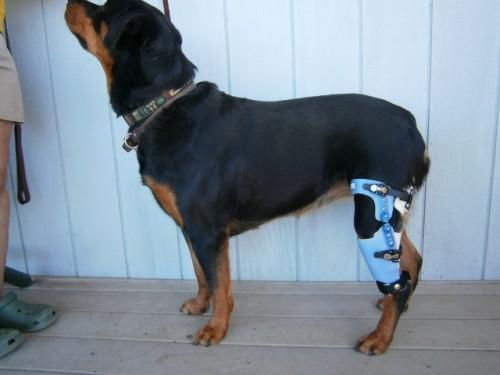
Read reviews check out our Google Reviews online. Click Here
Custom-made braces can help your dog after knee surgery – and can sometimes be used in place of surgery.
Ten years have passed since WDJ explored “conservative management” – the nonsurgical treatment – of knee ligament injuries (see “Saying ‘No’ to Surgery,” February 2010). Since then, although surgery remains by far the most widely used knee injury treatment, consumer demand for complementary therapies, including the use of custom-designed knee braces, has grown.
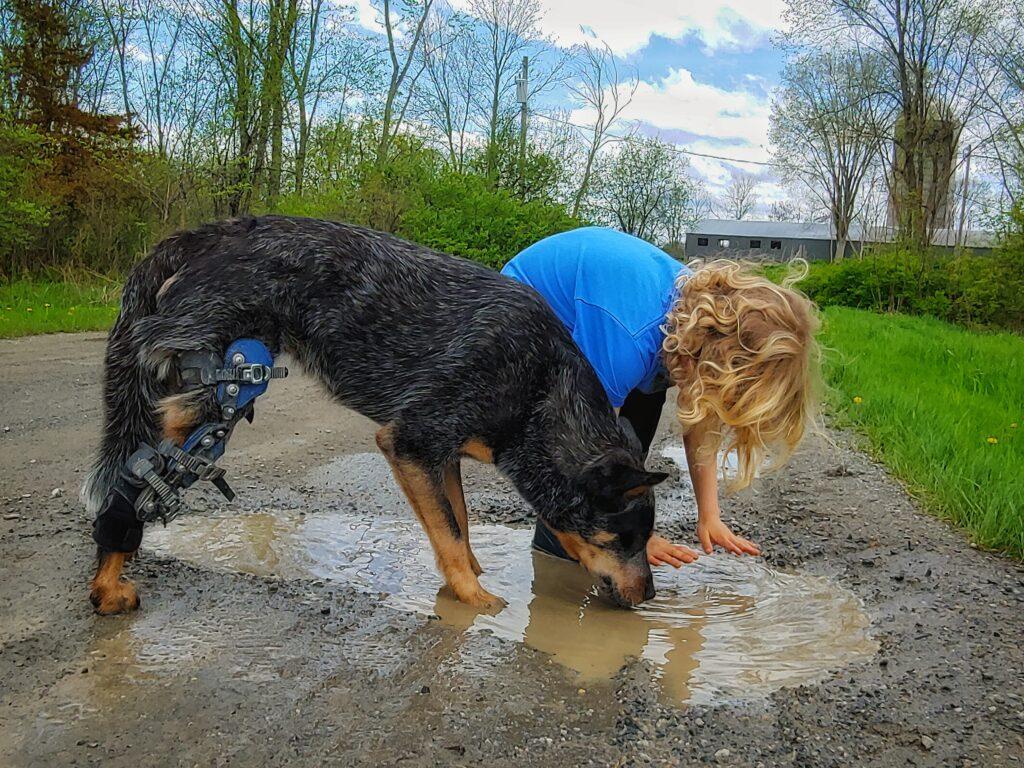
The majority of custom canine braces are made using materials supplied by the brace maker and are based on leg models that were cast in a veterinary office or at the client’s house. The resulting cast and supporting measures are provided so that the brace can be custom-made to suit. Sometimes casting needs to be redone because the cast was improperly created or was damaged during shipping. The appointment raises the price of the brace if done in a veterinary hospital.
The 11-year-old, 77-pound Golden Retriever named Pasha, who inspired the creation of the Posh Dog Knee Brace, had a left hind limb injury. When Pasha’s veterinarian discovered a ruptured cranial cruciate ligament and torn meniscus, he advised emergency surgery, stating that delaying treatment would result in a similar injury to Pasha’s right leg, severe arthritis, and a lifetime of inactivity for the dog.
Although Florida residents Jim Morison and Beth Scanlon, Pasha’s owners, could afford the $5,000 procedure, they were concerned due to Pasha’s age and past health issues, which included a history of anesthesia-related complications. Pasha’s rehabilitation started when they decided against scheduling surgery and purchased a personalized canine knee brace.
Read full article visit: https://www.whole-dog-journal.com/health/canine-knee-injury-brace-yourself/
To purchase a Posh Dog Knee Brace – Click Here
Read reviews check out our Google Reviews online. Click Here
First off, I want to do a bit of anatomy explaining. Dog’s, unlike people, walk on their toes. Cool, right? So coming up from the ground, you can follow their toes to their ankle, which includes the hock bone in the back of the bend. This is their “heel” bone. The next bone, in front of the ankle, and up to the knee, is the Tibia and fibula. The tibia thrust, just like in people, is what makes up the front of our knee. There is a prominent bump in dogs, directly underneath the kneecap, that is called the Tibial Tuberosity.
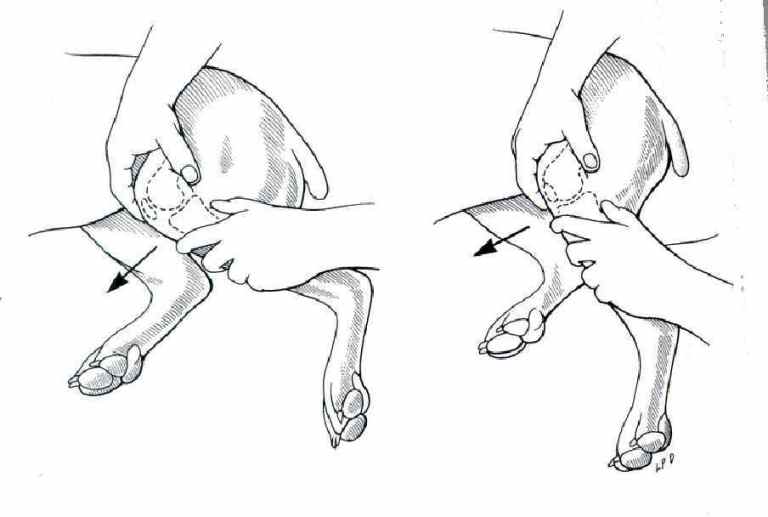
In the videos attached, you will see the kneecap is a small round bone, making up the top of the dog’s knee, then the bottom bone is the tibia. The cruciate ligaments, or CCL in dogs/ACL in humans, are located between the tibia and femur bones, directly in the back of the knee. When a CCL is in tact, there should be no movement, or positive drawer sign, in the dog’s knee. See video one, where there is no movement when palpated/moved.
In the next video, you can see what happens when there is no longer a ligament holding the bones together in the back of the knee. Now, the tibia bone is able to shift forward, or tibial thrust. This is a positive drawer sign, as there is a forward movement now where the tibia is shifting forward. This is obviously bad.
If you choose to do nothing, over time this movement of the bones will potentially cause the meniscus to tear/rupture, and start to form arthritis. It is important to immobilize this joint, to prevent these issues from occurring. Not to mention, that movement is very painful.
After 9-12 months of using a Posh Brace, this movement should be back to the first image, as fibrous tissue has formed and will re-stabilize the joint. Again, check out our website, poshdogkneebrace.com, or feel free to email me any questions to: our contact form or visit us on Facebook.
Read reviews check out our Google Reviews online. Click Here
Hi! Today I would like to talk about muscle atrophy in dogs, especially with CCL injuries. One of the biggest muscles in the body is the thigh muscle, which is needed in order to have full range of motion with the hind legs.
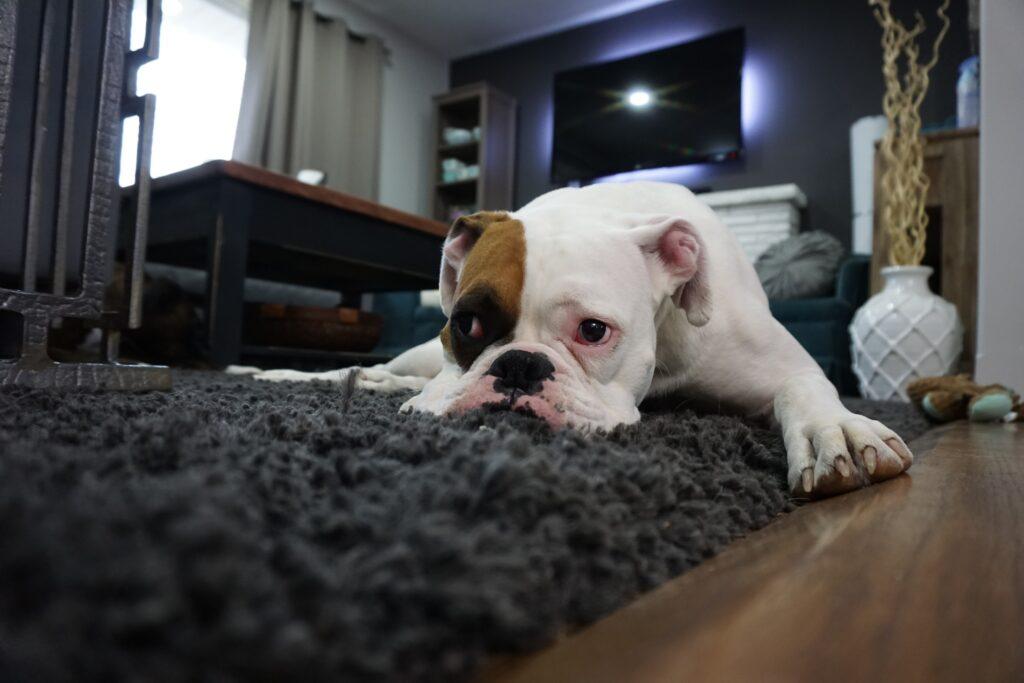
Without this muscle, we would be unable to completely lift our leg up and take a normal step. Dog’s that have an injury atrophy quickly. This is why it is really important to keep our patients active, while still letting the knee injury stabilize. With bracing, we are still able to place full weight on the thigh muscle, which may become sore initially, however, then we can start building this muscle back up, keeping it healthy.
This is another reason bracing can be better for patients than surgery, as with surgery there is a long period where you will need to confine your dog to keep them from hurting the surgical site. In the 8 weeks it takes to recover with surgery, there can be significant atrophy that sets in.
This is another reason that we include physical therapy with our patients, and walking schedules, to keep our dogs active, and using those muscles.
You may also need the help of a sling or a harness that includes handles as well, so that you can help your dog walk initially, until we start getting strength back in the thigh muscle. Our technicians are happy to help you with this, and with time we can get the muscles back. If you need more information you can reach out to us through our contact form or visit us on our Facebook Page.
Read reviews check out our Google Reviews online. Click Here
Today we want to talk and educate you on Meniscus tears, and what they mean for your dog. Say you just got back from a visit to your vet, to find out your dog has a CCL tear with a meniscal tear as well. Now what? Your vet I am sure has gone over all of the surgical implications for this problem I am sure, but have they explained what the meniscus is?
How important it is to have in our knee, or what the function is? No, most likely they have quoted you for removing the meniscus, and the CCL repair only. Now I do know many Veterinarians that will try conservative management first, and a very huge thank you to those vets!
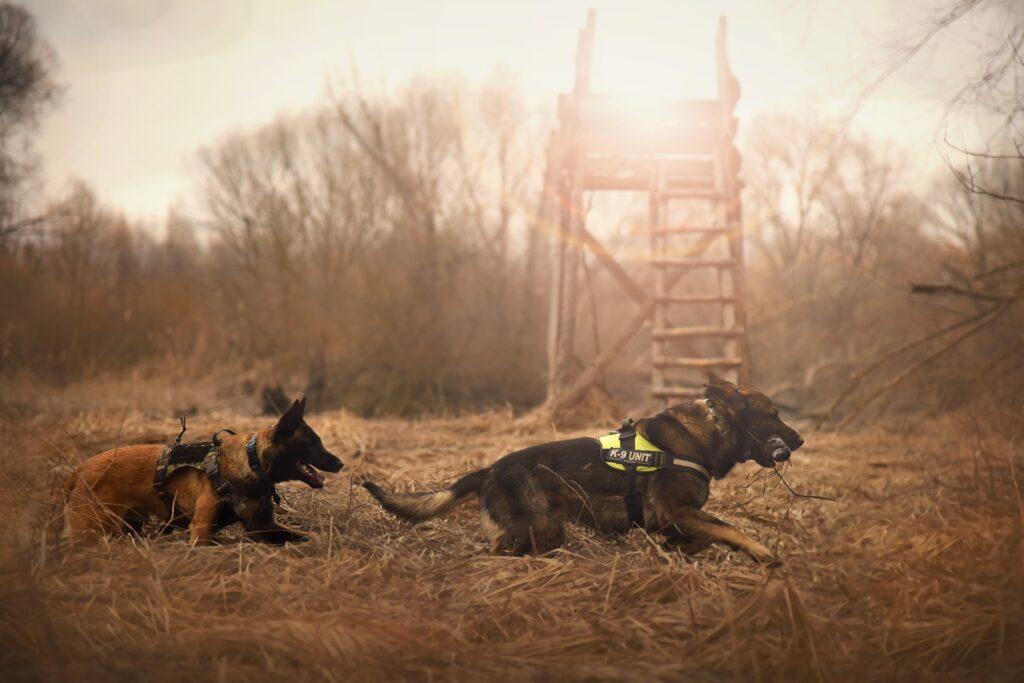
Well, you are in the right place. Our goal at Posh is to give you, as the dog mom and dad, options. Yes, you heard me, there are options with a Meniscus tear, not just surgery. Think of yourself for a minute. If you go into any orthopedic Doctors office, would they simply take an xray and schedule you for immediate removal of your meniscus? Absolutely not. There would be follow up appointments, probably an MRI to confirm, and then they would go over the options. Yes, there is that word again. Options.
Well, There are actually 2 menisci in each knee. The Menisci is a C shaped component made up of cartilage, and composed of collagen and joint fluid. 70% of the menisci is made of fluid that will compress with normal movement and release synovial fluid into the joint so that the knee can easily move. They act as our shock-absorbers and buffers, like in a car or truck.
With a CCL tear, it is very common to have a meniscal tear. There are several grades of tears, from a small tear, toa complete folding over of the meniscus. In most cases, the patient will have a minor tear. With this you may hear a pop or clicking sound. These tears are minor, and do well with bracing and Physical Therapy and Adequan Injections.
You can see now how it is very important not to completely remove the meniscus, as some vets may suggest prematurely. Now if the meniscus is folded over, usually you will see the knee sticking and unable to bend correctly. This is a surgical issue, and will need corrected.
Removing the meniscus almost always leads to arthritis and chronic lameness, as you just took out the joint’s buffer. Only if the meniscus has folded over, and I have seen this only twice in over 4,000 patients, will you need to consider removal.
It will take several months to heal, but healing is possible! Usually bracing for 12 months during activities, along with supplements and a good diet are enough to let the meniscus recover. Let us know if you have any questions, and we are happy to help your dog!
Nikki, Posh Lead Veterinary Technician
For more informaton please contact us through our contact form or visit our Facebook Page.
Read reviews check out our Google Reviews online. Click Here
Today I want to talk about surgery vs. bracing, and why we suggest bracing first.
First off, not every patient is a good surgical candidate. Be it weight, age, anesthetic risk, liver enzymes, poor health, or maybe the owners don’t have the $10k saved that it will take to fix not only the first knee, but the second knee that will go eventually once surgery is done.

Screws coming out, plate failure, angle was done incorrectly, bone fractures are very common, especially with large breeds doing TTA surgery, and infection is also very common. I have had several patients come to me that have been fighting infections for almost a year, such as mrsa, due to the surgical site not being sterile!
Unfortunately, some have the leg amputated due to complications. Also, if the angle is done improperly, they will start to weaken the ankle and hip joints, as things are not in alignment any longer, and start breaking down. Complications are common, and unfortunately some cause irreversible damage. I have even seen some patients have surgery done on the wrong leg, and yes that actually happened!
Also, 1 in 4 dogs that have surgery have lifelong lameness! With bracing, we don’t have any complications, or risk. Our patients are able to place full weight on their affected leg within just a few hours of receiving the brace. They can go for walks right away, which we will encourage. We also do physical therapy from your home, to help build the leg up and muscles, as well as Passive Range of Motion to help build strong tissue. We also go over diet and supplements, to give you the best outcome.
Just remember, you can’t undo surgery complications, but with conservative management there is always more we can do. Surgery should be a last resort. If you have any questions you can contact us on or contact form or visit our Facebook Page.
Read reviews check out our Google Reviews online. Click Here
Let’s talk about Rehab and Physical Therapy, and what the next few weeks will look like after a CCL injury and bracing. So, first off the first couple weeks we want to take things nice and easy. We are just going to incorporate Moist Heat, Range of Motion on the joint, and some light walking. We really don’t want to overdo anything, as there is most likely some mild swelling in the joint.
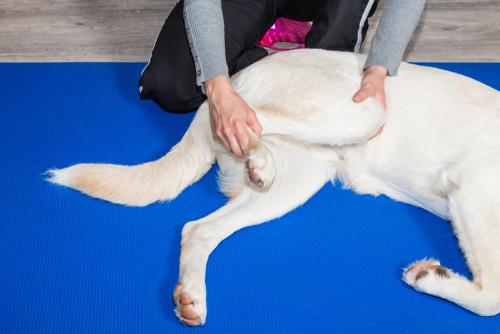
We have a schedule of Rehab, Range of motion, and walk schedules that we provide for each of our clients. We guide you over the next few weeks with different exercises you can do at home to help gain muscle and strength back on the injured leg.
Later into our schedule there will be different exercises, such as sit to stands. With the Sit to stand, we have your dog sit then stand, and offer a treat. Kind of like dog squats. These help to build the thigh muscle. Please do not do the sit to stands if your dog has a meniscal injury. If you are unsure, you can always ask your service Veterinary Technician. We have some demo videos on our FB page that will show you how to do each activity.
Another activity is called figure 8’s. This is where you will walk your dog around 2 chairs, or cones, in a figure 8 motion, then go back the other way. Another one is called curb work. For this one, you will have your dog standing parallel to a curb, and have them step up and down off of the curb, as you are walking straight. This really works the inner and outer thigh muscle, kind of like step aerobics.
A lot of our patients come with different stages of atrophy in the muscles, and with any injury it is very important to build on these muscles to get better.
With the brace they are able to put full weight on their leg, so even if you just walk your dog twice daily, this will really help. This may result is soreness for the first couple weeks with bracing and walks, but you will see this subside as they get stronger. Please let us know if you have any questions! For more information contact us through our contact form. Check out on our Facebook Page!
Read reviews check out our Google Reviews online. Click Here
Today I would like to talk about Moist Heat and icing, and when to use both of these. So when we have an acute injury, ice is the first choice. We have lots of swelling and tissue inflammation initially, so we want to use Ice, which will vasoconstrict the blood vessels, and slow down the bleeding/swelling. When we use ice therapy, I prefer to use a gel ice pad that can be left in the freezer. Frozen veggies or popcorn kernels can also work if you need something quick.
Apply the ice pack for about 15 minutes two to three times daily, until swelling is better, or about a week or two after the initial injury. This also helps with pain initially, by taking the pressure and swelling down.
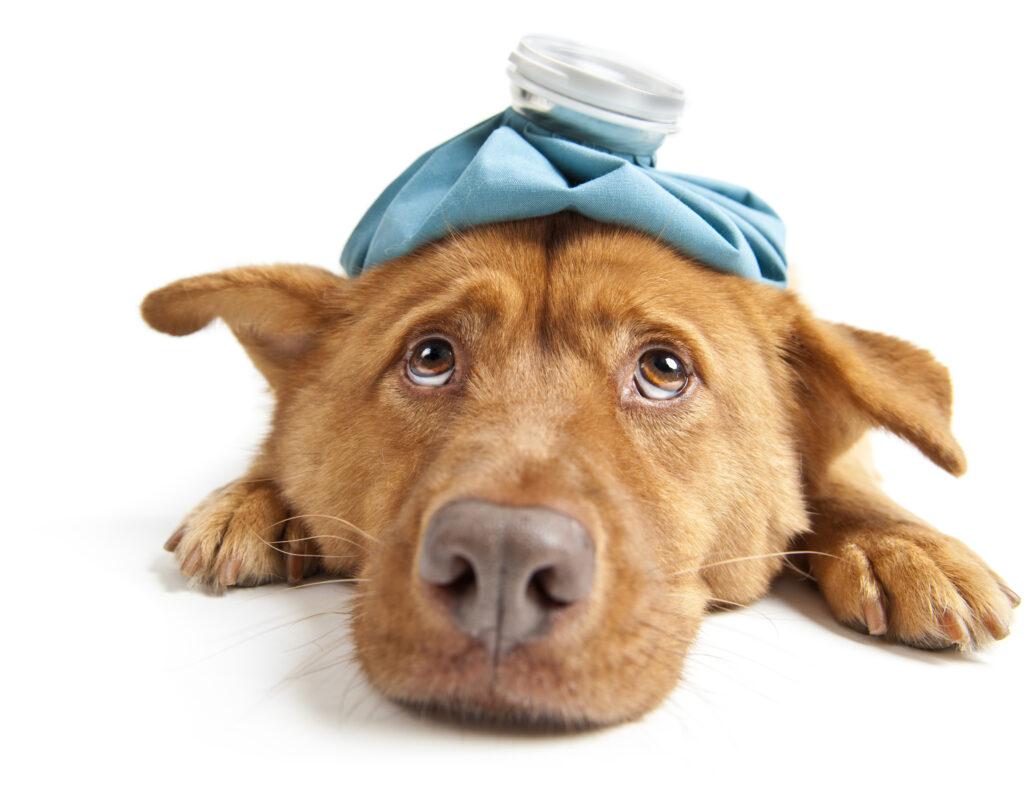
It is important not to do moist heat too quickly after a joint injury, as heat will vasodilate and increase blood flow to the affected area. We don’t want to do this when we have an initial injury with swelling present. After the first 2 weeks, we can start the transition to moist heat.
Now when applying an ice pack, a nice tip is to wrap the ice pack with warm wash cloth. This is a nice gradual cooling, instead of the initial cold shock. Your pup will thank you!
After 2 weeks, we will be switching to moist heat. To make your own moist heat, simply fill a sock with white rice (I double layer mine for washing). This makes a nice moist heat when you warm it in the microwave for 1-2 minutes. Wrap in a towel to make sure we don’t burn our pups.
Moist heat is different that dry heat, like an electric pad. Moist heat gets better penetration into the tissues, and is a very good pain relief. It opens up the area, so that our supplements can penetrate the area. Our knee does not have a great blood supply, so it is good to help with moist heat as much as we can. Do this 2-3 times daily for 15 minute intervals.
I like to do this before we walk, or start physical therapy. It relaxes and makes the knee comfortable. Do this process for up to 12 months, especially with meniscus tears. If you pup is sore after a walk, you can also do icing after the walk as well. Please let us know if you have any questions! You can contact us through our contact form or check out our Facebook Page for more information.
Read reviews check out our Google Reviews online. Click Here
Today let’s go through a few questions regarding scar tissue. I hear a lot of misconceptions regarding this topic, and today would just like to clarify things a bit more. I hear a lot of recommendations of “oh, just wait 8 weeks, and see how it goes.” I just want to clarify that this is not correct, it will take much longer for scar tissue to mature, and 8 weeks is not enough time.
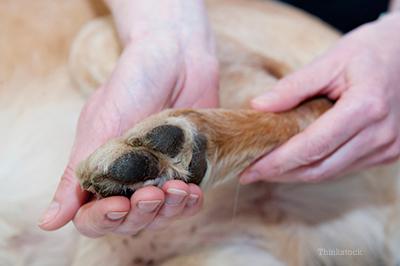
Let’s talk about the mechanics of the knee. The front of the knee is composed of 2 main bumps, the patella and the tibial tuberosity. The tibial tuberosity is on the Tibia bone, and above this sits our menisci. Then we have the femur bone above, with the patella. When we have a CCL tear, the bottom bone, or tibia, will thrust forward, causing abnormal movement in the knee. This is called Tibial Thrust. This is what your veterinarian will check for in the clinic. It may also be called a drawer sign.
So, scar tissue starts forming immediately , once the body has an injury to a ligament, to stop this movement. Basically, with conservative management, we are externally supporting that joint, allowing scar tissue to form, until we get to a point where there is no longer any movement.
Scarring takes 6 months to form to the juvenile state, and 9-12 months to fully mature. We suggest using the brace during any active times, to help this scar tissue heal. Any movement without the brace could lead to a re-injury of the scar tissue, and this could set us back a bit.
So, with a tear, we commonly see a lot of re-injury initially, before bracing. This can be a cycle until we get a brace on the knee to stabilize things. A re-injury is easy to do during the juvenile state. If this happens, just keep rested for 1 week, and resume our Physical Therapy schedule along with bracing. Too much too soon is not a good thing, this is not a race.
This is why it is so important to include Physical Therapy with our bracing, so that this scar tissue forms in the pattern we want it to. Range of motion allows the scar tissue to form in a healthy manor, and be more flexible. We do not want hard/stiff scar tissue to form, as this will decrease our mobility down the road. Please let me know if you have any questions! You can each me at poshintake1@gmail.com or you can send us your question on our contact form.
Check out more information on our Facebook Page if you are interested in purchasing a brace you can purchase a knee brace or elbow brace at our store. The Posh Dog Knee Brace is a 100% custom Dog knee brace, hand made only for your Dog. We make our custom brace with no casting. Our state-of-the-art brace for Dogs is very durable, waterproof, sand proof, and easily adjustable by customers. Our Veterinary Technicians provide personal live video supervision of measuring, and fitting of your Dog ACL brace in the comfort of your own home.
The Most Comfortable Dog Knee Brace For Dogs With A Torn CCL/ACL!
Read reviews check out our Google Reviews online. Click Here
You may need a support sling with helping a Dog with a dog knee injury up and down stairs etc. We make a great Dog knee brace. We did find this great idea for making a sling for your Dog – for about $3.00 and in 5 minutes:
Click Here to Read Full Article
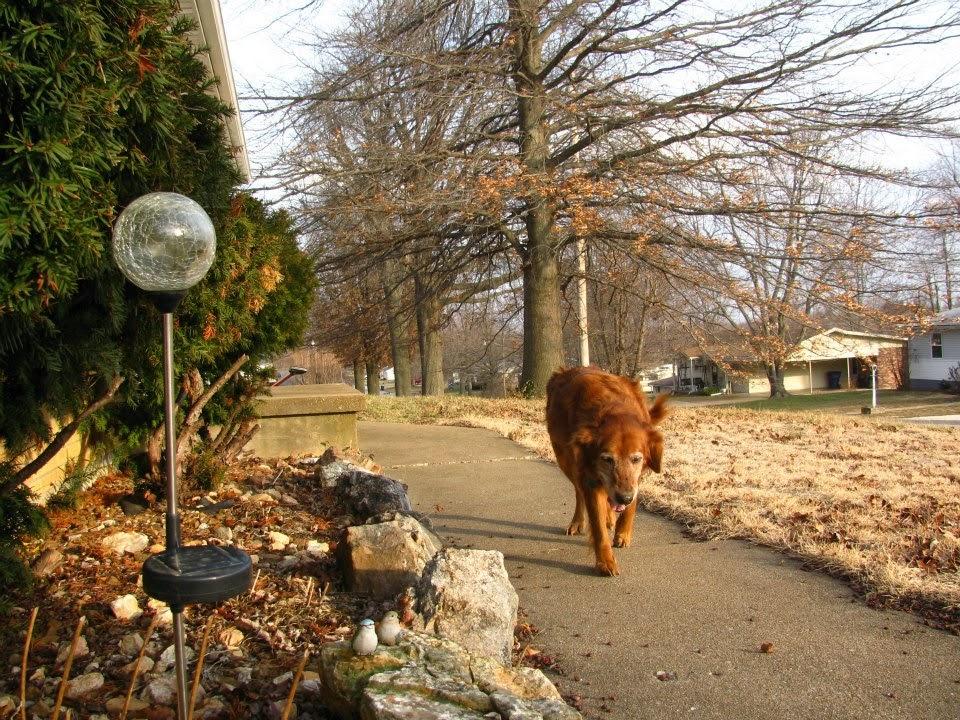
Interested in Ordering a Brace Click Here or need more information you can fill out our contact form.
Read reviews check out our Google Reviews online. Click Here
Many Customers have told us to share our story about how Posh Dog Knee Brace become a company. So here goes…
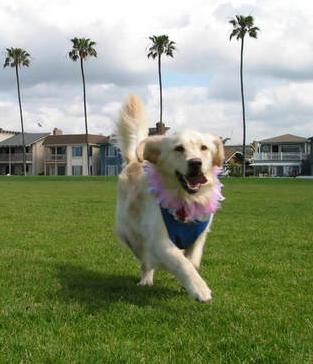
We make Dog knee braces, because we know they work, and some 60% of Dogs are not viable candidates for surgery, including geriatric Dogs, Dogs with other compelling medical issues, and Dog parents who simply do not have the average $3,000 + a cranial cruciate ligament surgery and post-op work is sold for.
Two and one half years ago, we saw how our own Pasha had a complete rupture of the cranial cruciate ligament in her left hind leg, as well as a severely damaged medial meniscus combined with crepitis [clicking/cracking] when she bent her leg.
Of course our former vet instantly stated that we HAVE to get the “state of the art” TPLO surgery from the top canine orthopedic surgical center in the southeast. This former vet insisted that if we did not get the surgery right away, Pashas other leg would “blow out” in less than 6 months, she would positively develop severe arthritis, and become lame, and the we would have to “put her down,” i.e. kill our beloved daughter. This form of emotional extortion was the wrong thing to say to us.
At that moment, we “put down” our relationship with this surgery-pushing vet. That weekend of Memorial Day 2013, we lived, 24-7, online collecting data about the various types of CCL surgeries, canine knee braces, and a lot more.
We learned of how this surgery is so lucrative, and so problematic, how certain esteemed vet publications questioned the outrageous number of CCL surgeries each year, how a Dog is FIVE time more likely to have a surgery on an injured knee than a person, and much, much more.
We read credible stories of other dogs with severe injuries, who recovered with a dog back leg brace, conservative management and supplements. We learned enough to then say; “no way” our beloved Golden Girl was going to have surgery, any of the seven types of Dog knee surgery, including the much heralded and over-promoted TPLO surgery, which, according to many vets, is not even 1% better or more effective than the surgeries costing half as much.
Most of what we found has been posted to our “Surgery Facts” tab. We are the only dog knee brace company who tells people the facts and serious risks about the dog knee surgery, as documented and shared by honest veterinarians.
Within 4 -5 weeks after she wore her 1st dog brace, which the vet insisted will NOT work [“GOTTA get the surgery!!”], the dreadful clicking/cracking of Pashas’ injured leg stopped and the crepitis has not re-occurred. Pasha was able to bear weight on her leg, with minimal pain. Her depression over her injured leg lifted. Yes, Dogs get depressed! Instead of a risky and huge setback of surgery, she began to heal – right away. Her leg developed the same scar tissue in her knee [stifle] as would have happened with the surgeries.
The companies who sold us the braces for an average of $900 + dollars had serious design flaws and used well, cheap, parts and velcro straps. We asked these companies to use high quality dog knee brace parts like chicago screws instead of pig metal screws, and ladder straps and micro buckles. They seemed offended that were telling them, with their years of experience, how to design a knee brace for our Dog, when we had no experience. Bottom line, they kind of told us to get lost. So we decided to make a brace that would exceed any dog knee brace on the market.
Pasha wore our first dog brace, and it outperformed any canine stifle brace out there. From there we invested sizable sums of money to start our company.
Although we likely could have removed the brace by January 2014, we left it on her ONLY for her daily 2 – 3 hour play sessions at the beach. As of May 2014, our baby Pasha has not worn a Dog knee brace. Her severely injured leg has healed completely, along with a regimen of supplements and conservative management.
I tell people that if you go to a car Dealership and ask if you should buy one of their cars, the salesperson will say: “YES – TODAY!!”
If you go to a canine orthopedic surgeon, rest assured 95% of the same breed of salesperson wearing a white lab coat, will say you should “GET THE SURGERY – right away.” If your veterinarian is like the former vet we went to, the vet may say, “the other knee will blow out and arthritis will happen and then you may have to kill your lame dog!”
Believe it or not, 3 weeks ago a Customer told me their vet said: “if you don’t get the surgery – we can go ahead and amputate the entire leg.” Astounding. This “veterinarian” obviously did not see a Dog with an injured leg; this vet saw a house and car payment limping into his office. There are some 80,000 veterinarians in the USA, and certainly not all of them are see “profit before the patient,” but plenty see only that. Look around.
Remember – 2 1/2 years ago, we were resoundingly told, by a person in a white coat whom we implicitly trusted, if we did NOT get the $5,000 ++ surgery immediately, Pashas other leg would fail in 6 months and she would have severe arthritis? [Rather despicable selling tactics].
Tick tock, tick tock… None of that happened. 2 1/2 years later, her right leg is just fine and she had no arthritis.
It seems quite logical that if a Dog DOES have the surgery, the uninjured leg has an extremely high chance of failing, due to increased load and stress during the 60-90 day horrible post op recovery [barring the high complication rate conceded by the veterinarian industry itself – see our “Surgery?” tab].
Before you trust the salesperson in the white coat, please put your Dog first, and consider the option of knee braces for Dogs, like the Dog knee brace we make just for Dogs with CCL injuries. That is all we make, and the Posh Dog Knee Brace is years ahead of all the others. We are the only company who makes a custom, high end dog knee brace, WITHOUT you or your vet having to make a cast.
See our real testimonials from real Customers page for some pictures of our current brace, working beautifully helping Dogs recover with no surgery and no casting required!
Give your Dog a BIG hug for us!!
Jim and Beth Morrison
To Order a Brace Click Here and visit our Facebook Page
Read reviews check out our Google Reviews online. Click Here
We are the only Dog knee brace site who offers advice and tips on holistic and homeopathic supplements. We believe in natural healing. We use and recommend the following products. We do not get paid from any of these companies, who do not even know we recommend their products. We are not part of any affiliate program. We have included links for your convenience, but feel free to look into other companies who sell the same products. As with all the content of this website, it is not to be construed as medical advice in any form. If you seek medical advice, consult with a veterinarian.
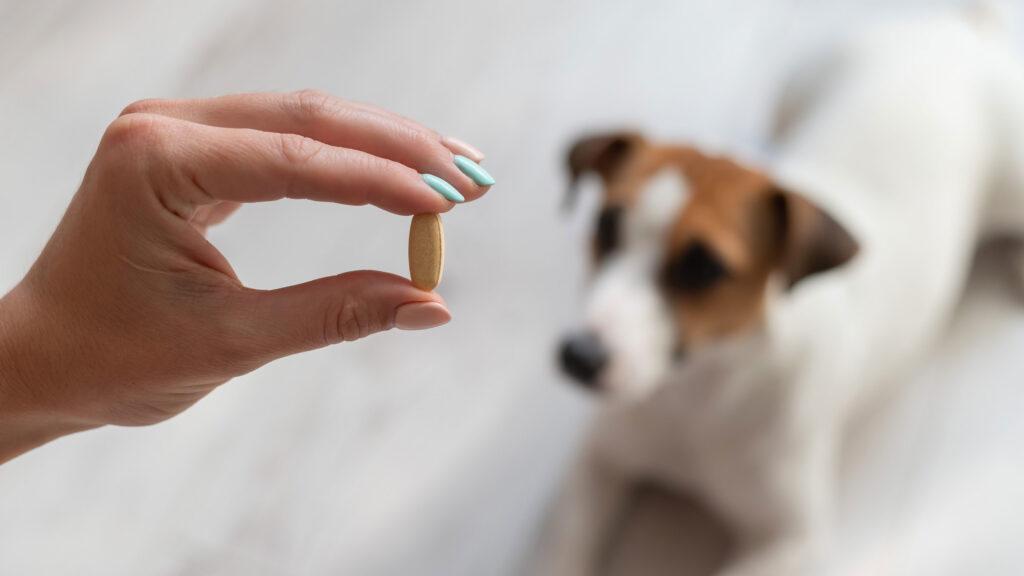
In addition to wearing a Dog Knee Brace for a K9 torn knee ligament, Pasha is given a daily “cocktail” of high quality supplements which support healing, accelerate tissue repair, and help alleviate pain and inflammation in her injured knee. We use a mix of supplements, including Nupro Silver for Dogs with CCL or ACL Injuries. Nupro Silver is a fabulous, high quality nutritional complex supplement which contains glucosamine, kelp, shark cartilage, MSM and other ingredients which can help your Dog recover from a ligament injury along with a Dog stifle brace, exercise, and conservative management.
You can get Nupro Silver online.
Ever since Pasha suffered a complete rupture of the Cranial Cruciate Ligament (CCL) in her left hind leg in 2013, part of her recovery has included a special, yet simple, daily “bone juice” which we give our 72 lb. Golden. She gets this once every AM and then the rest of her food throughout the day. (She fully recovered from her complete rupture over 14 months ago and no longer wears her Posh Dog Knee Brace).
Wearing a Dog knee brace for a canine CCL injury is just one part of the holistic approach and solution for a Dog ACL knee injury.
We buy the Nupro Silver from www.USBones.com. It comes in various sizes. This outstanding nutritional supplement for joint and connective tissue health contains glucosamine, sea kelp, shark cartilage and other beneficial ingredients!
When combining Nupro Silver with Glyco-Flex 3, be sure not to exceed the ingredients, as there is ingredient redundancy in these products.
The Alaskan wild salmon oil offers a high concentration of Omega-3 essential fatty acids and in more effective concentrations and higher quality than traditional fish oil.
Shop around for the spirulina, green lipped mussel, and tumeric to get the best pricing.
Some credible websites recommend UP TO 500 MG of glucosamine per 25 pounds of body weight. It may be a good idea to gradually build up to the appropriate dosage over a few weeks. Please read the entire article, particularly the section about contraindications. BTW this site has lots of truthful and outstanding articles about Dog Health – a must read!
We give our Golden baby 4 oz of DECAF green tea in her bone juice, since it is so beneficial for preventing cancer and overall health, BUT it MUST be decaf – caffeine can be very dangerous for Dogs! BTW check back soon for tips on avoiding and treating cancer in Dogs.
Remember that helping a Dog recover from a partial or complete rupture of the ACL involves more than just a well-built custom Dog knee brace or Dog stifle brace for a canine knee injury from Posh Dog Knee Brace, it also involves nutritional supplements and conservative management! Look for our upcoming blog about this.
Wishing your Dog a long, healthy and fulfilled life! Give your beautiful Dog a BIG hug from all of us at PoshDogKneeBrace.com!
Update # 1: In addition to giving Pasha DECAF [caffeine will harm Dogs!] green tea each day as an anti-cancer measure, we’ve also added a daily capsule of medicinal mushrooms: Reishe, Maitake and Shiitake mushrooms. Even though Pasha does not have cancer, given her age, we are introducing herbs and other confirmed, safe, anti-cancer agents to her daily routine.
We learned about this amazing mushroom mixture, used by Eastern (real) doctors for many centuries, at AnimalWellnessMagazine.com, a fabulous magazine that promotes REAL heath, and NOT big-pharma, 100% profit-based “health” in Dogs!
Update # 2: Although she presents with no symptoms of cancer or malignancies, and as apreventative measure, and after spending >> hundreds << of hours researching confirmed alternative and authentic treatments for cancer (many say cures), each day we give Pasha 6 crushed, raw, unpasteurized apricot kernels which we buy from ApricotPower.com These MUST be unpasteurized seeds, since pasteurization removes most nutrients from any food. Just search LongLivingPets.com to learn more, or search “laetrile cures cancer”. Apricot seeds have a very high density of naturally occurring laetrile.
Update #3: Now That Pasha is 13, she is no longer fond of mixing a lot of the foregoing supplements in decaf green tea. We now give her supplements wrapped (hidden) in fresh ground turkey “eggs,” i.e. Packed into about 2 tsp. of ground turkey. For the supplements in powder form, like the ground apricot seeds and Nupro Silver, we fill large gelatin capsules and wrap those with ground turkey. You can buy 500 large gelcaps on amazon for almost nothing.
(C) Copyright 2015
Contact us for more informatin. Click Here
Read reviews check out our Google Reviews online. Click Here